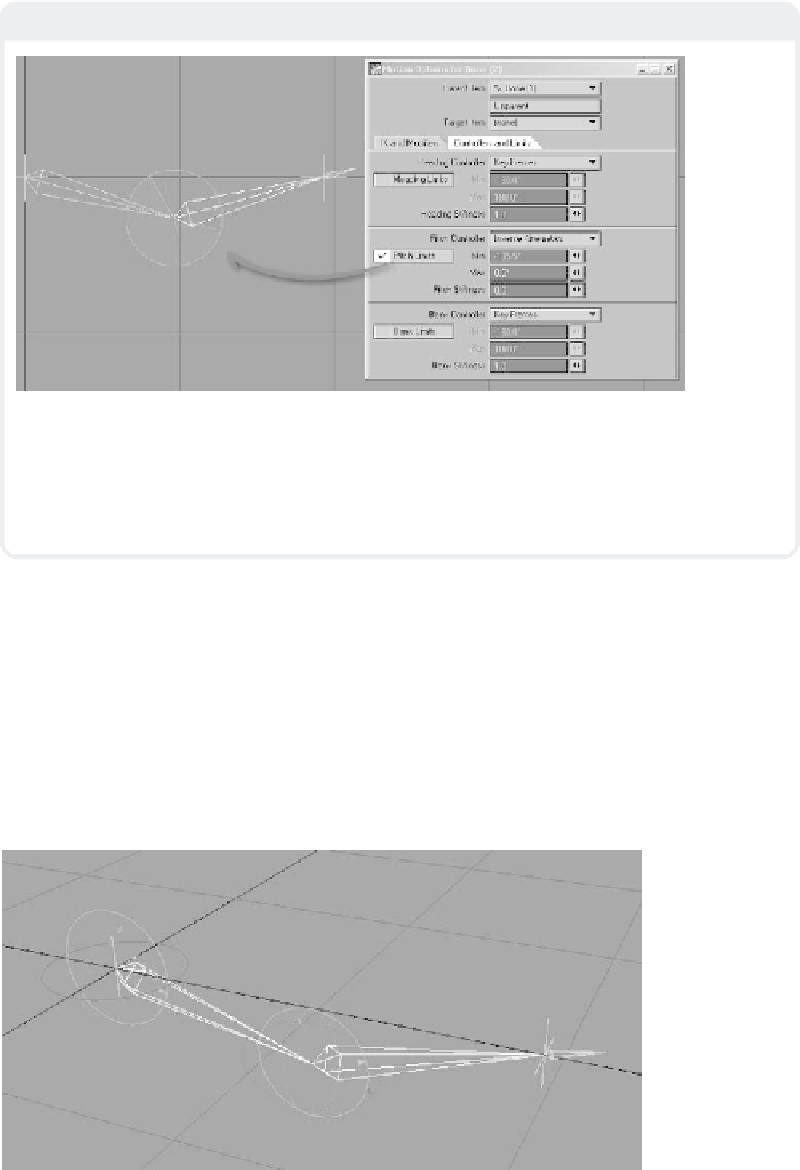Graphics Programs Reference
In-Depth Information
Note
Figure 16-16
Some have had great success with using limits to restrict how far a bone will bend in a given
angular direction. However, without the ability to “cushion” these limits, the resulting motion of
an item as it reaches its limit is often sharp and inorganic. So I tend to shy away from using limits
whenever possible, opting instead for well-planned models and cleanly executed animation.
Number of Axes Solved
If you take a look at your own arm or leg,
you'll find that it's built much the same way
as the above illustration. Your bicep and
thigh can swing back and forth, and up and
down (two axes: heading and pitch), while
your forearm and calf move only around one
axis of the elbow and knee, respectively.
I've found that referencing real life in
building riggings helps more than nearly
When you have two or more joints in an IK
chain operating in 2D space, things tend to
work quite well. But in three-dimensional
space, the level of complexity of the calcula-
tions that IK must figure out rises
dramatically. If you want things to work
dependably, you're going to have to curb
your demands on the IK solver.
Figure 16-17





